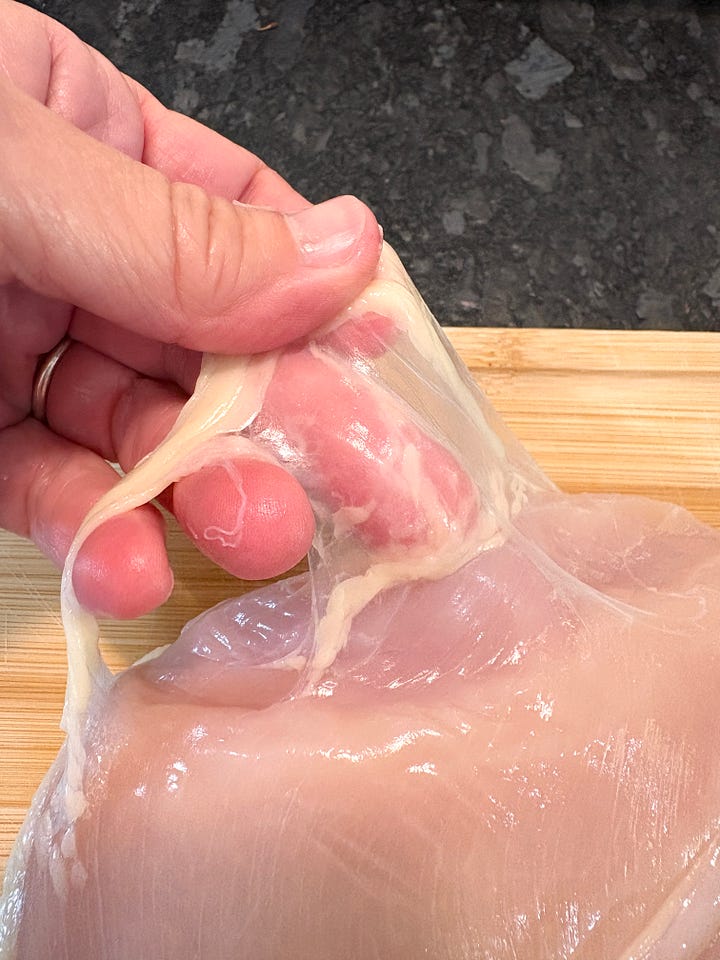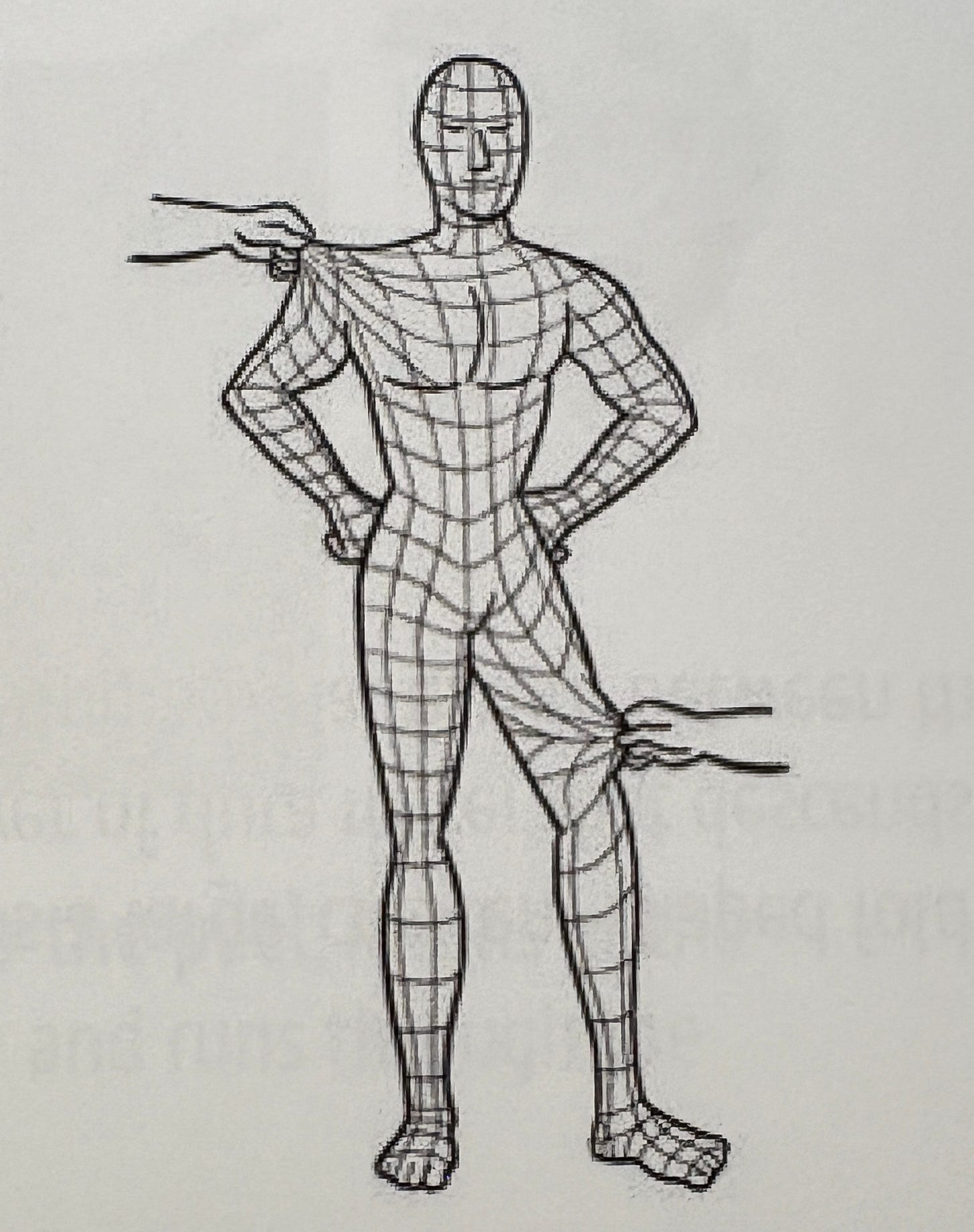CFT
A few weeks ago I mentioned I was going to CFT training with my daughter in Tennessee, and since a few of you have asked “What is CFT?” I thought I’d tell you what I now know about it.
If you’ve been here a while, you might remember me talking about the chronic pain in my neck (not Ben). I’ve had knotted muscles in my neck and shoulders for years, but after my head-on wreck in 2018, it became more pronounced and harder to live with. So in 2022 I finally began the quest to deal with it.
First stop was my regular doctor since Tricare won’t let you blow your nose without prior authorization and a written referral. I’m a little sketchy on the exact timeline, but over the next two years I was seen by multiple orthopedists, had X-rays more than once, a CT scan, and an MRI. I tried chiropractic, many massages, cupping, electro-stimulation, months of physical therapy, dry needling (which is as fun as it sounds), and acupuncture (more fun). Finally I went to UVA and let them inject a steroid into my spine, which was its own special kind of torture. Each thing was my last-ditch effort and each thing failed to give me any relief at all.
Finally my daughter asked me if I’d tried CFT.
Me: “What?”
Leah: “Craniosacral fascial therapy.”
Me: “Again, what?”
I can’t remember how she described it, but she said she’d been going for a while and it had helped her a lot. So of course I did what every intelligent adult does and Googled it. The explanations I found didn’t help my understanding at all, but here I was at last-ditch effort #9, so I wasn’t waiting around for clarification. If there was even a 1% chance of this helping, here’s my wallet, take all my money.
So I found one of the two practitioners in all of Virginia and I went. Then I went again. I really didn’t feel any better, and then my father had a stroke and we began the year-and-a-half-long family crisis in which we lost both of my parents, and the neck pain was put on the back burner. Crisis has a way of dulling other hurts.
Then last year around this time I was back to being desperate, so I called my CFT gal, who lives almost two hours from me. I told her briefly what the last year had held for me and that I wanted to start treatment again. That’s when I found out she was coming to Lynchburg (just one hour from me) two Saturdays a month. The angels sang and my gas bill greatly diminished.
From my perspective, I still wasn’t too confident this was going to help me, but what else could I do? I’d tried literally every other thing that might be a benefit. Since I couldn’t even explain what it was or did, Ben and I referred to it as “woo-woo” therapy. D, my CFT therapist, would have me lie on the massage table fully clothed, and place her hands very lightly behind my head, on what I now know is my occiput. She was barely touching me. Not moving or pushing or doing anything. Sometimes we talked, sometimes I slept. Occasionally she would move one hand and place it lightly somewhere else—fingers on my temples or on a shoulder. Then we graduated to her having one hand under my sacrum (this is where the cranio and sacral parts come in—they are the two ends of the spinal column) and the other hand maybe on my stomach or the side of one leg. Still she didn’t move or push or actually do anything.
Every few weeks I would ask some questions, trying desperately to understand how this was supposed to help me, and with each “explanation” I began to grasp a tiny bit of the process. And ever so gradually, my neck pain began to diminish. The improvement was barely noticeable until the pain wasn’t there.
I am guessing here, but I would say it took a solid 7 or 8 months of regular treatments for me to say I had no pain in my neck. My range of motion increased to what I think is normal for a 64-year-old. And it has taken me a full year to really understand how CFT works. I’ll try to explain it.
Imagine yourself wearing a Spiderman suit. It covers you from head to toe, all one piece of stretchy fabric, perfectly form fitting with no loose spots. If you grab the fabric at your shoulder and pull, it distorts the fabric all the way down your leg to your toes.
Now imagine that stretchy fabric is inside your body, underneath your skin. That stretchy fabric is called fascia. It is:
. . . the body’s connective tissue, providing a framework that helps support and protect muscles, organs, and the entire body as a unit. It is an all-encompassing web found throughout the body that protects the entire body as a whole. It surrounds organs, muscles, brain, spinal cord and all other body parts for protection from outside trauma. It supports the musculoskeletal system and allows us to perform functional activities like walking, jumping, running, or simply changing position.1
You might notice fascia when trimming steaks or getting chicken ready for the grill.


It’s tough and strong and everywhere in your body. In the CFT training, we watched a dissection that removed one intact layer of deep fascia that started at the tongue and ended at the toes. While it was still in the cadaver, if you moved the tongue, you could see the toes move. It truly is all connected.
The craniosacral system encompasses the cranium and brain, all the way down the spinal column to the sacrum. It pumps cerebrospinal fluid throughout the system to keep everything lubricated and nourished and to remove toxins. It actually pumps in a regular rhythm.
Did you know you have a “brain cycle”? It’s true. Your craniosacral system, when moving freely, has a natural rhythm of expansion and contraction that keeps the fluid pumping everywhere it’s supposed to be. You probably can’t feel your own brain cycle, but someone who is trained should be able to. A short brain cycle (quick expansions and contractions) indicates more tension in the fascial web. A longer brain cycle shows the system is working more optimally and with greater freedom.
So the craniosacral fascial system includes the brain, cranium, spinal column, and sacrum, and also extends to the fascial web that runs from one end of the body to the other. Why does this matter? Because
A healthy system allows for the free flow of cerebrospinal fluid from the brain, down the spine, to the sacrum, and into the fascia.2
Now you’re asking, “Karen, what does this have to do with your neck pain?” and that’s a great question.
The short answer is that
All of us have experienced trauma—difficult birth, surgery, accidents, falls, concussions, dental work/orthodontics, and emotional trauma, to name a few. Starting from birth, traumas accumulate and can create strain and toxicity in the craniosacral fascial system, restricting critical brain motion.3
So the cumulative effect of all my concussions, accidents, and trauma was that my fascia tightened up so much that my brain cycle at my first CFT visit was 16—that’s 8 seconds to expand and 8 seconds to contract. It should be at least 100, optimally over 200.
So I had tight fascia, which, because it is over and under and throughout everything in the body, prevents cerebrospinal fluid from flowing properly. When cerebrospinal fluid is restricted from flowing freely, it is unable to nourish and detoxify the brain and body, which can limit range of motion and cause a lot of other problems. In my case, severe neck pain that no other treatment helped.
Enter craniosacral fascial therapy.
CFT techniques are designed to gently unwind and release accumulated fascial strain. This allows optimal mobility and better brain function. When the craniosacral fascial system is loose and open there is free flow of cerebrospinal fluid to help nourish and cleanse toxins, and that allows the body to heal itself.
Now listen, I still have a lot of questions, such as, why does one hand have to be on the occiput or sacrum and the other can be somewhere else? How does barely touching a place of tension signal it to release? I don’t know the answers right now, but I know this has worked when nothing else did. When I learn the answers, I’ll share them.
https://www.craniosacralfascialtherapy.com/what-is-cft
https://www.craniosacralfascialtherapy.com/what-is-cft
https://www.craniosacralfascialtherapy.com/what-is-cft



Very interesting and I want to know more. Aside from the Lynchburg location, where else in VA is there a practitioner? I’ve seen an upper cervical chiropracter and she really helped me post operatively in 2017. I hope this gives lasting relief for you.